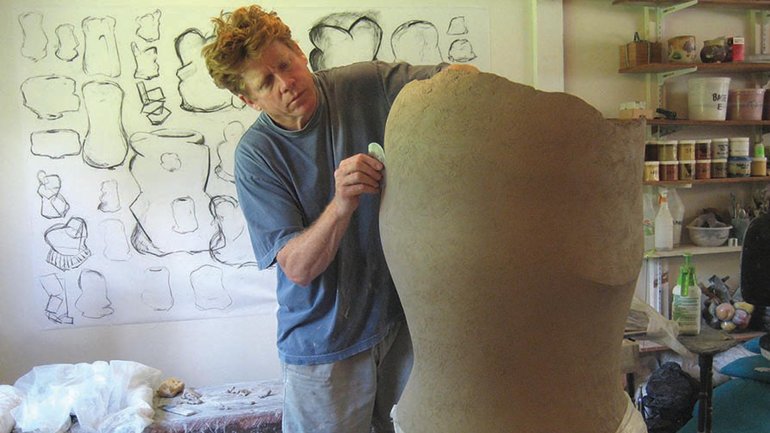Masters: Chris Gustin
Masters: Chris Gustin
Families shape all of us, but few can pinpoint the moments with as much clarity as Chris Gustin. The ceramic artist grew up around clay; his parents – creative, artistic people – owned whiteware factories in Los Angeles. Gustin was headed down that path when his older brother, Dan, intervened. He and his wife, Jane, were studying at Kansas City Art Institute; he urged Gustin to join them.
“He took me aside,” Gustin recalls. “And it was a really powerful thing, because he talked about choices in your life and how to make them, how to invest in something you love. And he saw that I loved making pots.”
That gift brought him to KCAI during Ken Ferguson’s tenure – “a golden period,” says Gustin, of teachers, peers, and energy. He went on to Alfred University, where he earned an MFA in 1977. After graduation, as Gustin was struggling to establish himself as a studio potter (fielding one rejection after another), he found a fat envelope in his mailbox – another gift, of sorts. He’d won an NEA Fellowship. He walked back inside and cleared the boards. “It was like, OK: I’m going to make work for me. These people believe in me.”
Some 25 years later, Gustin’s family redirected him again, in a profoundly different way. By then, Gustin had a successful career by any measure. His expressive sculptural work had earned him a second NEA grant, among scores of other honors. He had taught for 20-plus years, retiring in 1999 from the University of Massachusetts Dartmouth (at a mere 47). Then, in the late 1990s, his younger brother began having health problems, and, in time, was diagnosed with multiple sclerosis.
Gustin and his wife, artist Nancy Train Smith, began visiting him more often. Over a period of years, he and Gustin had conversations about how the disease was changing his life – and how to let go of who you once were with integrity.
“And my work started to just let go,” Gustin says. “Everything softened, everything quieted.” In 2005, his brother unexpectedly died, one month before Gustin was scheduled to have a show. Bereft, he glazed everything he had made for the show white. Today, he considers it his first mature body of work.
“All the pots I love, throughout history, were made from that place – of community need, of spiritual need,” Gustin says. “It was the gift he gave me.”
A light touch: Gustin began using his anagama kiln – a single-chamber, wood-fired design – for almost all of his work in 2006. He was drawn to how glaze and wood ash interact, creating subtle color that moves over and around forms, and syncs with their gesture and softness.
Early adopter: “You know the schoolbook thing, where you say what you want to be when you grow up?” Gustin asks. “I said: Pottery man.”
Place of pride: Gustin is a co-founder of the Watershed Center for the Ceramic Arts. “We formed it on the idea that everybody’s equal,” he says. “Get some kid who’s in his third year of undergrad school and put him next to somebody who’s been working 40 years, see what happens. Sit around at night and talk, sit by a campfire. It’s community at its deepest.”
Full circle: In 1996, Gustin added a tile business to his repertoire. He was inspired by the tile that he and his wife Nancy made for their home – and bolstered by his long-ago experience as a foreman in his parents’ ceramics factories.
On vulnerability: Gustin made an active choice to talk about his brother’s death and how it changed his work. “One, it’s authentic, and it’s real, and it’s who I am. But the second [reason] is that a lot of times I’m talking to students, and I want them to understand that life is your source.”
Read more about the 2016 American Craft Council Awards and winners.

